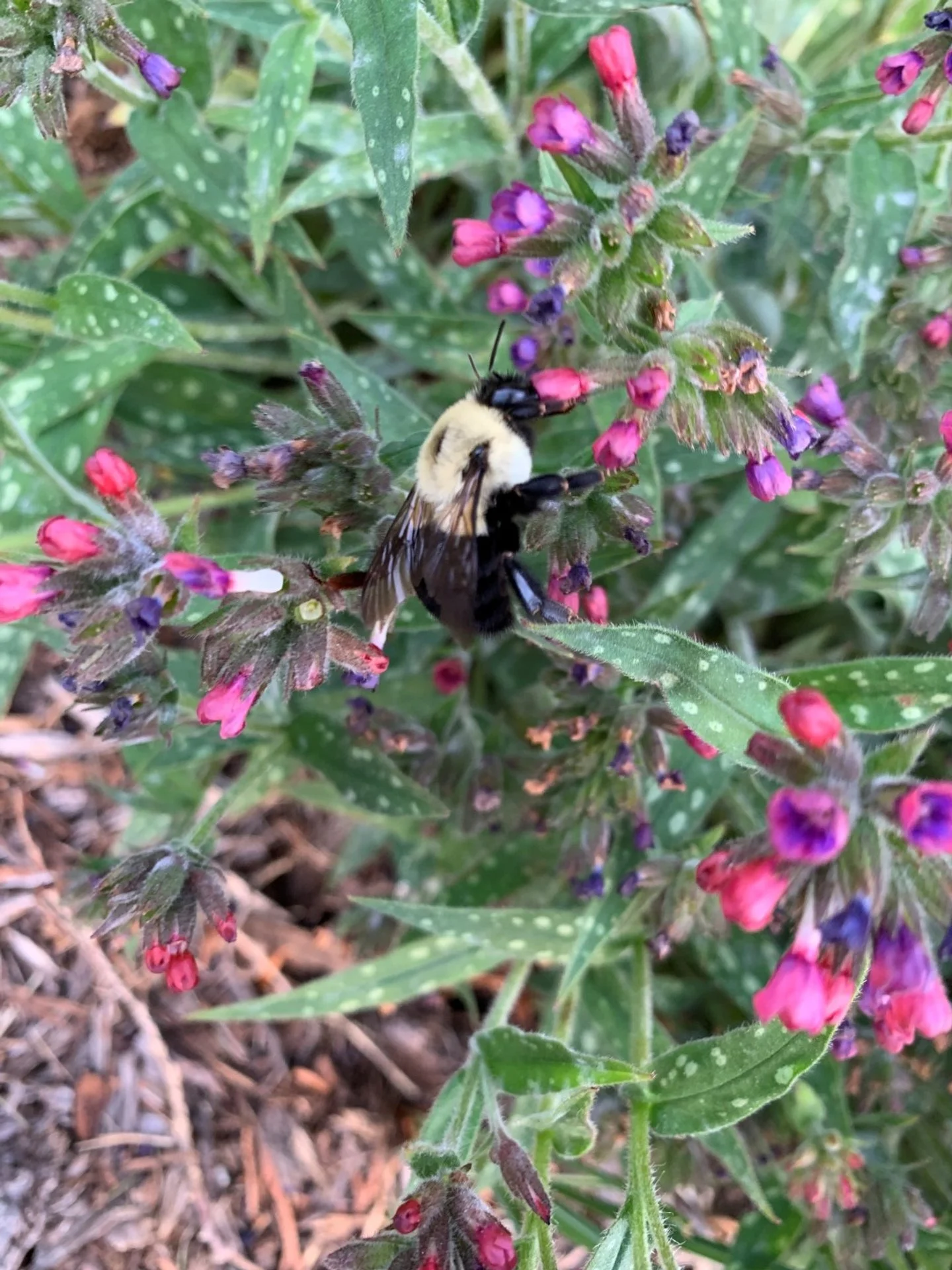Native Bees
Bees are important insects for our food sources. Seventy-five percent of our major food crops depend on pollination to mature, and bees are great pollinators. While honey bees are an important source of that pollination, and provide the added benefit of delicious honey, they are not the only bees that we enjoy here in Wisconsin.
Honey bees are not native to Wisconsin. They came from Southeast Asia and are considered a “managed herd” as they are maintained by humans. Contrast that with the over 400 species of native bees that we enjoy who routinely go about their daily business of pollinating fruit, vegetables, trees, and flowers of all varieties.
Bees do not shoulder the pollination load by themselves. Wasps, butterflies, moths, hummingbirds, and even some beetles and ants also serve as pollinators. However, bees do carry the majority of the load, and are responsible for about 80% of the food pollination job.
Many people mistake bees for wasps and are frightened of them. Wasps, yellow jackets, and hornets are aggressive, giving people good reason to avoid them. They have smooth, hard bodies, smooth stingers, and are carnivorous or omnivorous. Native bees, on the other hand, are non-aggressive and in many cases are quite gentle. They seldom strike, unless provoked. They have smooth stingers; their bodies are covered in fine hair and they are vegetarians.
The native bees are generally solitary bees; females may live near one another, but they do not work together. The one exception is the bumble bee (Bombus sp.). This bee is social, living together with a division of labor similar to honey bees: queen, drone, and worker. They are large bees, up to one inch, and are such superior pollinators that many greenhouse owners keep them. They nest in abandoned underground chipmunk or rabbit burrows and overwinter as adult mated females.
Mason bees (Osmia sp.) are another important native bee. Different species emerge at different times and pollinate specific fruits such as strawberries and tree fruits. Many orchards and fruit growers employ this little helper. They can be metallic blue or green, depending on the species, but are all small to medium sized (¼–¾” long). They are solitary and nest in hollow reeds and stems, using mud to seal the ends after eggs are laid.
Leaf cutter bees (Megachile sp.) are a critical pollinator of our Wisconsin wildflowers. They are similar in size and nesting habits of the Mason bee, but they plug the end of their nests with vegetation rather than mud. They also transport pollen on their abdomen (scopa) rather than their legs as most bees do.
Mason bees and Leafcutter bees can easily be attracted to your landscape using reed/tube houses, either homemade or purchased. This link gives further information about how to install and maintain those houses: https://pollinators.msu.edu/publications/building-and-managing-bee-hotels-for-wild-bees/
For the vegetable gardener, Squash bees (Peponapis pruinosa) are a daily visitor. This mid-sized bee nests underground in the patch, comes out early in the morning, and pollinates the large squash flowers.
Space prevents me from introducing more of our native bees, but this handy bee identification guide: https://hort.extension.wisc.edu/files/2016/08/WI-BEE-IDENTIFICATION-GUIDE.pdf gives excellent information on a dozen of the most common native bees.
To make your landscape bee-friendly, plant a continuously blooming supply of nectar plants, provide shallow water, and some uncultivated ground for the bees who need mud for their nests. Avoid pesticides as much as possible and put up a few nesting boxes.
Carol Shirk
Certified Master Gardener
